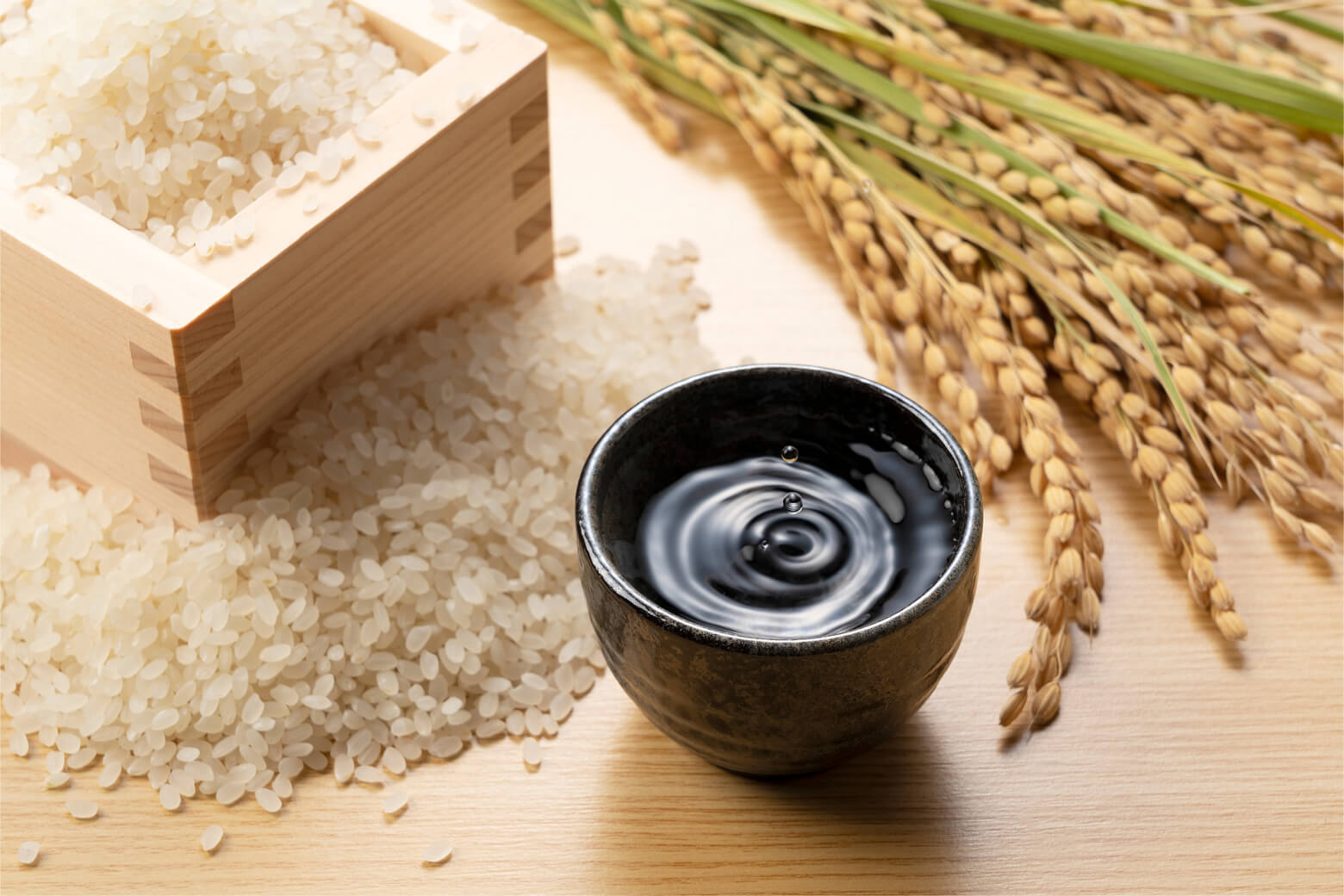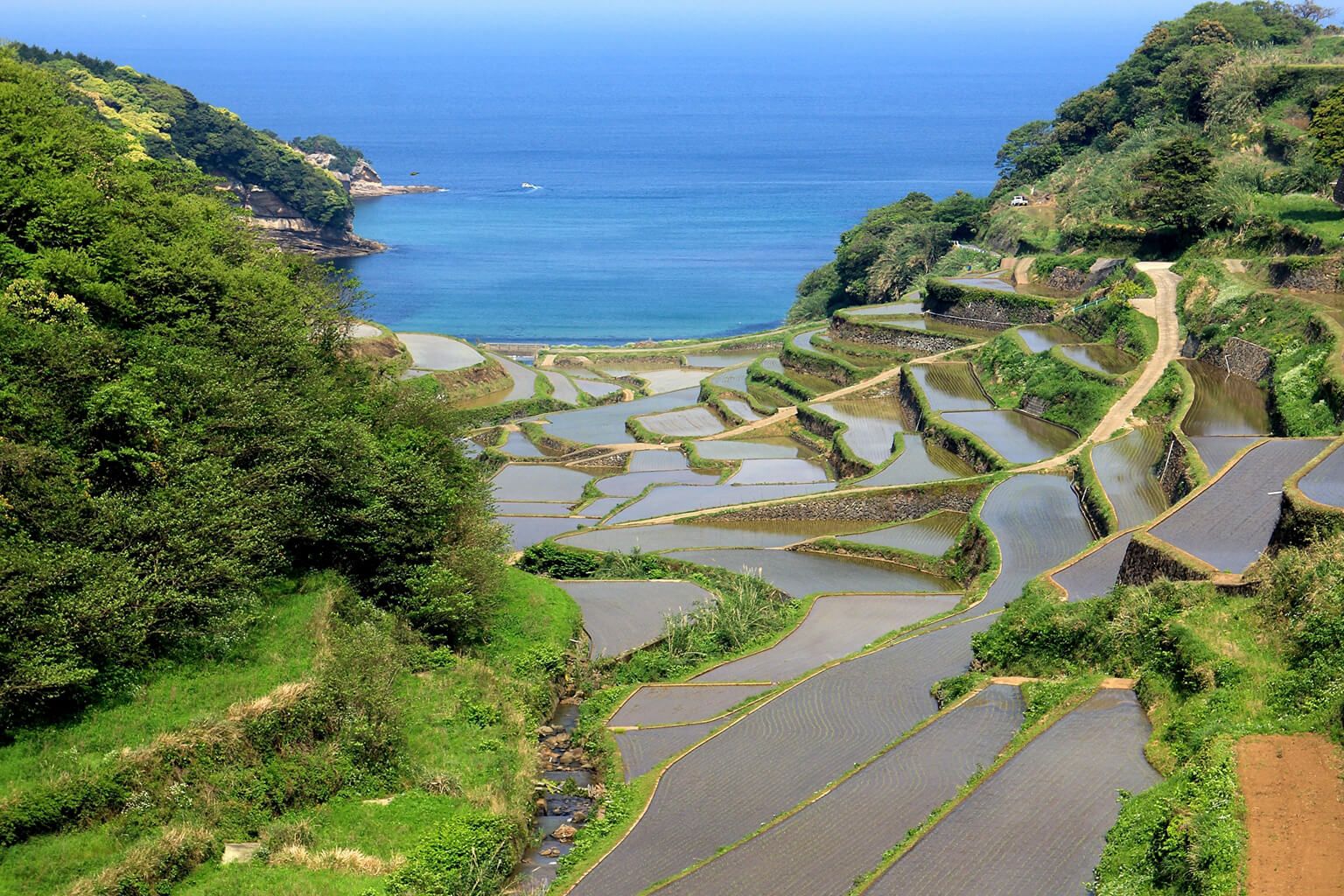Tomita Brewing Company is one of the most historical sake breweries in Japan. Their world-famous Shichi Hon Yari sake series is carefully brewed all by hands. In this spotlight, Mimi and Sachiko interview their 15th kuramoto, Yasunobu Tomita, to discover his passion for protecting tradition and creating a new history of sake.
Mimi: We’ve heard that Tomita Brewing Company is one of the oldest sake breweries in Japan, having been founded in the 1540s. Are there any traditions at your brewery that have endured throughout your 500-year history?
Yasunobu: Well, the town that our brewery is in, Kinomoto-cho, burned down completely twice due to large fires during the Edo period. For that reason, there aren’t many physical items that remain from that time. The theory and techniques used to make sake have changed quite a bit from that time as well. But if there is one thing that I can say that hasn’t changed from the beginning, it would have to be the fact that we’re still making sake here at the location we started at in 1534.
Yasunobu: Several years ago when we were in the process of renovating the brewery, there was talk of moving to a wider area so that we could increase our productivity. But we felt that making sake at our current location provided us with a foundation, so even though it’s cramped and can be inconvenient, we’ve chosen to continue making sake at our current location.
Another important fact that hasn’t changed is that we’ve been able to continue drawing groundwater from our well, regardless of fires, and because of that abundance, all the water used in our sake production comes from that well. Perhaps that’s the most unchanging thing about us.
Mimi: I see! So since your founding, you have relied on the same source of water.
Yasunobu: Yes, that’s right. And the well is on brewery grounds, it’s about 60 foot deep! We draw water from that well and on some days we draw up to about 8,000 gallons of water.
Sachiko: With respect to the question of moving, did you feel that you wouldn’t be able to produce the same sake if you moved even just 5 miles due to a change in your water source?
Yasunobu: That’s part of it. Water plays a huge role in sake making. Wine usually doesn’t need additional water since it’s made from grape juice, right? But there isn’t a lot of water contained in rice, so the liquid all comes from shikomi mizu (brewing water used in sake making).
And while water in Japan is relatively soft, it does vary from region to region. An extreme example of this is the fact that the water minerality of another sake brewery in the same town as us is slightly different than ours. And you can almost definitely say that a change in the water quality will change the resulting sake.
Yasunobu: But I think beyond that—I think there is something to be said by continuing to make sake in the same location we were founded. Of course it’s important to provide customers a delicious drink, but by staying here and taking root in the community, we’re making a statement about our brewery beyond just the taste of our sake. So rather than making a move because we could increase productivity, we placed weight on the meaning and significance of our presence in this town.
And this might be presumptuous, but I also think that the town has grown to match the look with a sake brewery. If we were to scrap the brewery one day and the land just became an open plot, it would change the feel of the town. Generations of residents in town have grown up watching the brewery, so our hope to stay rooted here was a big deciding factor.
Mimi: We saw images of your brewing facilities and buildings that were built in the Edo period on your website. From those images, we can really see that Tomita Brewing Company’s focus is on protecting and carrying on its traditions. But as a brewery focused on protecting your legacy, do you have any new goals you wish to achieve in the future?
Yasunobu: We think that protecting the traditions of sake passed down over generations is very important, and we want to keep those traditions as the strong foundation for our brewery. Before making sake, I actually used to sell wine in Japan, and when I visited these really established wineries in France, I was deeply impressed by their long histories, the weight they put in their values towards winemaking, and their presence in the industry.
Now, the popularity of premium sake is growing and new sake breweries continue to pop up across Europe and the US. And while I can’t say where sake will go from here, I believe that the more sake becomes loved around the world, Japanese sake breweries will have to be the authorities when it comes to the tradition and history of sake. Even if Japanese breweries aren’t able to compete with “new world” sake that are better tasting and have a greater cost performance, the history of sake won’t change.
Mimi: That’s so true. And what do you exactly mean by history of sake?
Yasunobu: When I say history, I’m referring to the culture behind sake, the buildings, tools, and techniques used to make it, and its ties to the gods. So sake making is not just focusing on making a delicious drink based on a recipe, but also taking into consideration its history.
Of course, simply passing down tradition can stifle creativity. So if you think of tradition as one wheel [of a cart], the other wheel is your image of what you want to create now, or challenges you want to overcome.
As an example, currently we’ve been purposefully using traditional techniques of using wooden barrels, but rather than let the sake sit and change naturally, we try to be proactive and closely monitor its process. By balancing tradition and creativity in this way, we’re creating our own unique way of making sake that represents our brewery and is both old, yet new.
Mimi: At Tippsy, your Shichi Hon Yari sake series is one of our best sellers. I was curious which one is your favorite.
Yasunobu: It would have to be our junmai sake, Shichi Hon Yari “Seven Spearsmen,” which uses a strain of sake rice called Tamasakae. When I first returned to the brewery, everyone wanted to use Yamadanishiki, which is often referred to as the king of sake rice. Because of the popularity of Yamadanishiki rice, many breweries bid and compete to use it in their sake, and the shelves at sake shops were all filled with sake made from Yamadanishiki rice.
Mimi: What made you decide to use different rice for your sake?
Yasunobu: What I learned from my time selling wine was that even the smallest wineries in Europe would talk about how their wines embodied the character of the region. So applying that to sake, I thought to use rice strains that are from Shiga, Tamasakae and Ginfubuki, and contract farmers around the brewery to grow it. I felt that Tamasakae really matched the character of our brewery. We wanted to make Tamasakae synonymous with Shichi Hon Yari, so we’ve worked with farmers to increase production to the point that it’s now about 75% of the rice we use in sake making. But yes, I would have to say Shichi Hon Yari “Seven Spearsmen” holds a lot of memories for me since I put a lot of work into it.
Mimi: Wow, I love the story! Do you have a recommended way to drink your junmai sake?
Yasunobu: Our concept for sake is that it can be enjoyed at your ordinary dinner, so I recommend drinking it with a meal. I suggest pairing it with stronger flavored foods, even experimenting with western foods. I know a lot of people have this image of sake being paired with Japanese cuisine, but take a leap and try having it on a day you would typically turn to wine. I think you’ll be pleasantly surprised. An easy pairing would be with some hard cheeses like a mimolette, cheddar, or gouda.
Sachiko: That sounds delicious! Do you have suggestions for drinking vessels or temperatures?
Yasunobu: Lately I’ve been drinking sake in wine glasses. If you’re drinking warm sake, I definitely recommend drinking from an earthen vessel. But drinking from a glass, you can really pick up the aroma of the sake. As a sake maker, drinking from a glass makes it a lot easier to analyze the composition of the aroma. So if you want to enjoy sake in that way, I recommend drinking sake in a wine glass. The Riedel Junmai glass is a fun glass to try it in, just be careful when you swirl not to spill.
As for temperature, recently I’ve been enjoying the hotter side, about 130℉. Of course, nuru kan (warm sake) is great in that the flavor really just spreads throughout your mouth, but by heating it even more, I feel the flavor really comes together and concentrates to one point, making it a nice, clean drink. Also, they say junmai sake has a ricey quality to the flavor, and heating it brings out the ricey-ness even more. Just as a bowl of rice can pair with many different foods, our junmai sake can do the same.
Mimi: Now for our last question. What does sake mean to you?
Yasunobu: Of course, one of my goals is to make a delicious drink, but I also want to go beyond that. I’m often asked if my job is difficult, but a lot of the points I focus on when making sake are described by words that I like. For example, words like regionality, tradition, handmade, food, architecture, vintage, maturation... These are all things that are important to me that I feel like I can express to our customers using Shichi Hon Yari sake. It’s not just something to get drunk on, but a medium that I can express myself through.
Sachiko: Even though you’re not wearing a kimono, it feels as if you are. I really feel you embody the samurai spirit!
Yasunobu: (Laughs) I don’t want to get overbearing with our focus on tradition, though. I want to make sure that we can share the tradition and true character of sake while also making it fit into what people are looking for today. I want them to see how great sake is and understand why we want to protect it.















